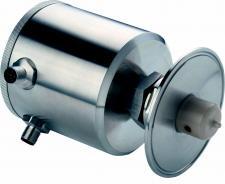
If you answered no, then it’s time you take a look at the Anderson-Negele ILM-4.
Typically, with the competitor’s conductivity sensors the toroid components are placed in a metal sleeve. They then have the peek molded over the metal.
Issues arise due to the sensor being exposed to heat and then cooled during manufacturing cycles. This will make the metal shaft expand and contract, which will result in the peek cracking. The result is that the sensor will no longer be useable.
Because expansion and contraction with heating and cooling during manufacturing can’t be avoided, Anderson took a new approach to solve this problem to ensure processors are getting a longer life span from their conductivity sensors. With the ILM-4, Anderson has adjusted the manufacturing process and component design to eliminate this cracking issue.
They mill out the peek and place the components inside without the metal sleeve. This allows the peek to expand and contract during manufacturing cycles without cracking.
 ILM-4 Benefits
ILM-4 Benefits
If your conductivity sensors do not last 5-7 years then you may have an inadequate sensor on your hands. Contact a Rodem rep today to learn more about Anderson’s ILM-4 Conductivity Sensor and other top of the line equipment that will help your process maintain optimal efficiency.

E-mail: [email protected]
Copyright 2024 Rodem Inc. All rights reserved.
